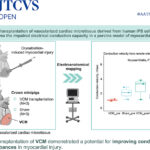2025-03-28 新潟大学
<関連情報>
- https://www.niigata-u.ac.jp/news/2025/818448/
- https://www.niigata-u.ac.jp/wp-content/uploads/2025/03/250328rs.pdf
- https://academic.oup.com/nar/article/53/2/gkae1324/7951714
ユニークな 30S-30S 二量体化を促進する新規古細菌リボソーム二量体化因子 Novel archaeal ribosome dimerization factor facilitating unique 30S–30S dimerization
Ahmed H Hassan, Matyas Pinkas, Chiaki Yaeshima, Sonoko Ishino, Toshio Uchiumi, Kosuke Ito, Gabriel Demo
Nucleic Acids Research Published:11 January 2025
DOI:https://doi.org/10.1093/nar/gkae1324

Graphical Abstract
Abstract
Protein synthesis (translation) consumes a substantial proportion of cellular resources, prompting specialized mechanisms to reduce translation under adverse conditions. Ribosome inactivation often involves ribosome-interacting proteins. In both bacteria and eukaryotes, various ribosome-interacting proteins facilitate ribosome dimerization or hibernation, and/or prevent ribosomal subunits from associating, enabling the organisms to adapt to stress. Despite extensive studies on bacteria and eukaryotes, understanding factor-mediated ribosome dimerization or anti-association in archaea remains elusive. Here, we present cryo-electron microscopy structures of an archaeal 30S dimer complexed with an archaeal ribosome dimerization factor (designated aRDF), from Pyrococcus furiosus, resolved at a resolution of 3.2 Å. The complex features two 30S subunits stabilized by aRDF homodimers in a unique head-to-body architecture, which differs from the disome architecture observed during hibernation in bacteria and eukaryotes. aRDF interacts directly with eS32 ribosomal protein, which is essential for subunit association. The binding mode of aRDF elucidates its anti-association properties, which prevent the assembly of archaeal 70S ribosomes.

